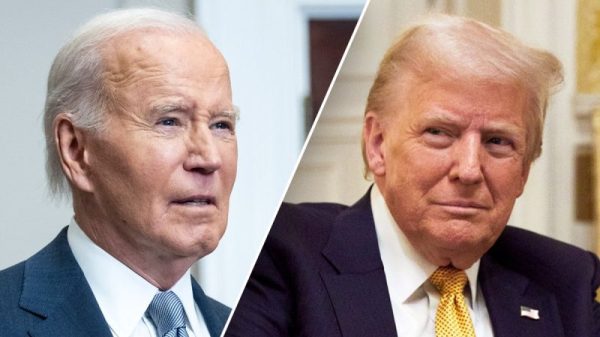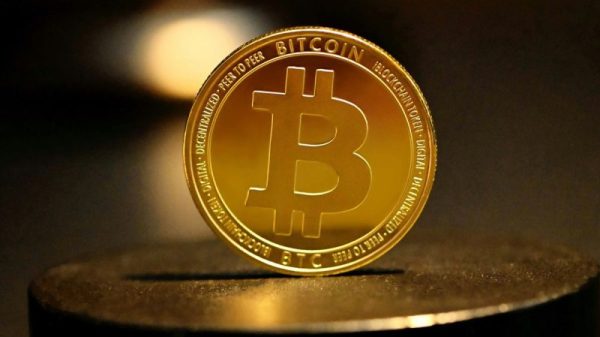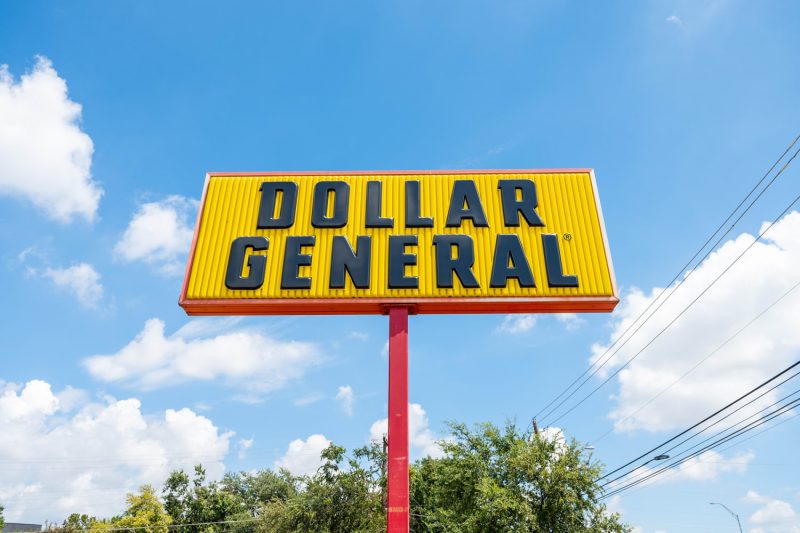As shoppers look for value, dollar stores might seem to be logical destinations. But that penny-pinching mentality hasn’t been enough to lift sales for Dollar Tree and Dollar General.
Shares of the deep discounters have plunged so far in 2024. The retailers have each cut their full-year forecasts because of weaker-than-expected sales. And both have had leadership shakeups: Dollar General and its former CEO Jeff Owens parted ways in October 2023, and Dollar Tree CEO Rick Dreiling stepped down Nov. 4. Dollar Tree is also exploring selling off Family Dollar, its more grocery-focused brand.
Those results are a sharp turnabout for the dollar stores, which were once Wall Street darlings. The struggles have put scrutiny on the two retailers, which will report quarterly earnings this week.
Peter Keith, a retail analyst for Piper Sandler, said a challenging mix of factors hurt the retailers. Lower-income customers, who tend to shop at the chains, are most vulnerable to economic changes such as inflation. Razor-thin operating models, such as lean staffing and low hourly pay, contributed to sloppy aisles and a poor customer experience, he said. And competition grew fiercer, as legacy retailers such as Walmart made significant investments in e-commerce to keep up with consumers’ changing habits during the pandemic, he said.
“Dollar stores inherently are sort of convenient because they have a lot of locations, but they don’t have very strong digital offerings,” he said. “And I think that’s become a disadvantage in the current environment.”
Shares of Dollar Tree and Dollar General have both fallen more than 40% this year, while the S&P 500 has gained more than 26% during the same period.
For decades, dollar stores have drawn in shoppers by offering a wide array of items at simple prices and smaller sizes that fit a constrained household budget. Yet each of the dollar store banners has a different spin on strategy and assortment.
Dollar Tree is made up of two store brands, its namesake and Family Dollar. Dollar Tree sells a lot of seasonal and discretionary items, such as party supplies and toys, at stores in suburban strip malls.
Family Dollar, which Dollar Tree acquired in 2015 for nearly $9 billion, is found in more urban areas and sells more food and household staples. Family Dollar has been the weaker part of Dollar Tree. The company plans to close about 1,000 Family Dollar stores and is exploring a potential sale of the business.
Dollar General focuses primarily on rural customers. It historically sought out small towns or residential areas where shoppers otherwise had to drive a long distance to get to a grocery store or a Walmart. In recent years, it’s debuted a new store concept, Popshelf, which sells more discretionary merchandise aimed at middle- and upper-income shoppers, such as makeup, candles and throw pillows.
Though they deployed different strategies, both chains relied on store openings to fuel sales growth. The two retailers are the largest in the U.S. by store count. Dollar Tree has more than 16,000 stores, while Dollar General has nearly 20,000 locations across the U.S. Between the two brands, there is more than one dollar store for every 10,000 people in the U.S.
They have many more stores than their rivals: Walmart has roughly 4,600 stores, and Target has nearly 2,000 locations across the country.
Yet high inflation has tested their business models. About 60% of Dollar General’s overall sales come from households with an annual income of less than $30,000 per year, CEO Todd Vasos said at Goldman Sachs’ retail conference in September.
Those frequent customers tend to feel the pinch first during challenging economic times.
Vasos said in September that Dollar General saw “a pretty drastic slowdown” in the middle of the three-month period that ended Aug. 2. He said the drop-off “happened across every region, every division that we had, almost the same amount” — including its newest stores.
And the past two years of high inflation have played out differently than in the Great Recession, Piper Sandler’s Keith said. During the roughly 2007-to-2009 period, middle- and upper-income households started shopping more at the dollar stores to stretch their budgets further.
This time around, unemployment has remained low, and other value-focused retailers, including Walmart, have attracted those middle- and upper-income shoppers, Keith said.
In the most recent fiscal quarter, most of Walmart’s market share gains came from households with annual incomes of over $100,000, CFO John David Rainey said.
Warehouse clubs such as Costco and Walmart-owned Sam’s Club, online players such as Amazon and Temu, and private label-focused grocers Aldi and Trader Joe’s are also competing for — and sometimes stealing away the business of — price-conscious shoppers.
Dollar General has acknowledged stiffer competition. “The guys in Bentonville [the Arkansas home of Walmart’s headquarters] took a little bit larger piece” of the retailer’s middle-income customers, Vasos said at the September conference.
On Dollar Tree’s earnings call in early September, Chief Operating Officer Mike Creedon, who was recently named interim CEO, said the retailer had to cut its full-year outlook to reflect “how the challenging macro environment continues to pressure our customers.”
He said Family Dollar’s core customer, who is lower income, “remains weak.” Yet he said Dollar Tree, a chain that draws a more diverse mix of customers, noticed a pullback from shoppers across middle and upper incomes in the recent quarter, as the toll of inflation, high interest rates and economic pressures mounted.
Discretionary merchandise items, which tend to be more profitable than food or household essentials, were some of the worst sellers at Family Dollar in the most recent quarter, as shoppers bought fewer home decor, seasonal and beauty products, Creedon said on the earnings call.
But some of the challenges for the dollar stores are more self-inflicted.
Both companies have faced backlash on social media and agreed to pay millions of dollars in fines to federal regulators for the conditions of stores and warehouses, including cluttered aisles and blocked fire exits. Dollar General in July reached a settlement with the U.S. Department of Labor to pay $12 million in penalties for workplace safety concerns, on top of more than $21 million in fines from the federal Occupational Safety and Health Administration since 2017.
Dollar Tree agreed to improve worker safety in a 2023 settlement with federal regulators after it had racked up more than $13.1 million in OSHA fines since 2017. In February, it pleaded guilty and agreed to pay nearly $42 million after inspectors found live and dead rodents in an Arkansas warehouse that stored food, drugs and cosmetics.
Those safety violations can scare away customers who see those news headlines and notice when employees seem overworked and shelves are sloppy, Keith said.
“No one wants to shop in what looks like a kind of a dirty, messy environment,” he said.
Some of those problems date back to the Covid pandemic, said Alasdair James, who was Dollar Tree’s chief customer officer from early 2021 to early 2022. As the government paid out stimulus funds and the Covid virus spread, retailers struggled to fill jobs at their stores.
Some Dollar Tree locations wound up with a single worker who was left to juggle all the duties, from checking people out to stocking shelves — resulting in messy stores that turned off shoppers, he said.
Plus, vendors and consumer packaged goods companies prioritized big-box stores during the pandemic by making the more typical bulk sizes of items rather than the downsized, budget-friendly sizes sold by dollar stores, James said.
He said those out-of-stocks and poorly staffed stores drove customers to rivals.
Dollar Tree has also shaken up its pricing approach. During the pandemic, the retailer raised the price of most of its items to $1.25, and it has rolled out merchandise at higher price points, including $3, $5 and $7.
In a statement, a Dollar Tree spokesperson said the “multi-price expansion at Dollar Tree, which we believe will be a long-term growth driver, continues to resonate with our customers.” He described the retailer as “a solution for families who may be feeling the financial strain of inflation,” including families who don’t live near a grocery store or pharmacy.
Both companies also face a new risk under the administration of President-elect Donald Trump. Trump has pledged to roll out additional tariffs on imports from China, a source of many goods sold at the dollar stores.
Dollar General declined to comment about the company’s challenges.
It recently touted one strategy aimed at attracting more visits from holiday shoppers, though. Dollar General is promoting a “24 Days of Savings” event in December, where it offers a deal on a featured item each day. The promotions, such as discounted holiday mugs or 12-ounce packs of bacon, are only available in stores.
— CNBC’s Ryan Baker contributed to this story.


































